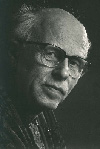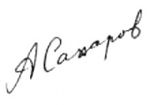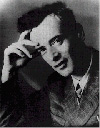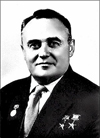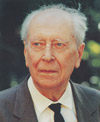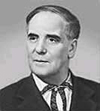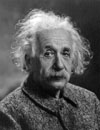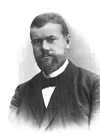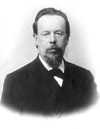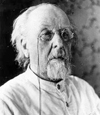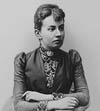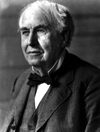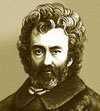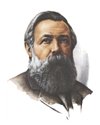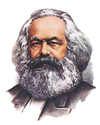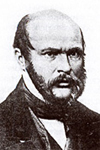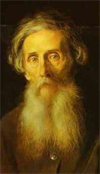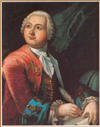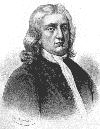Signatures of scientists
Andrei Dmitriyevich Sakharov
(1921-1989)
Soviet physicist, Academician of the USSR Academy of Sciences and political figure. Dissident and human rights advocate. In 1948 was included into a special team and up to 1968 had been developing thermonuclear weapons. Doctor of Physics and Mathematics (1953). Winner of the 1975 Nobel Peace Prize “for fearless support of fundamental principles of peace between people and courageous struggle against misuse of powers and any forms of suppression of human dignity”.
Lev Davydovich Landau
(1908-1968)
Soviet physicist, Academician of the USSR Academy of Sciences (1946). He worked in the sphere of quantum mechanics, solid state physics, magnetism, low temperature physics, cosmic-ray physics, hydrodynamics, quantum field theory, atomic nucleus and atomic particle physics, plasma physics. He was a member of Academies of Sciences of Denmark, the Netherlands, American Academy of Sciences and Arts, French Physics Society, London Physics Society and London Royal Society. Winner of the 1962 Nobel Prize in physics “for his pioneering theories for condensed matter, especially liquid helium”.
Sergei Pavlovich Korolyov
(1907-1966)
Soviet scientist, designer and organizer if production of missile and space equipment and missile weapons of the USSR, “father” of Soviet cosmonautics. Creator of Soviet strategic missile medium and inter-continental weapons. Design developments of Sergei Pavlovich Korolyov made the USSR an advance missile and space state. His contribution into organization and development of practical cosmonautics is of a world meaning.
Dmitri Sergeyevich Likhachev
(1906-1999)
Russian philologist, art historian, Academician of the USSR Academy of Sciences, later – of the Russian Academy of Sciences. Author of hundreds of works (including more than 40 books) in a wide range of issues of theory and history of Old Russian literature; many of them are translated into English, Bulgarian, Italian, Polish, Serbian, Croatian, Czech, French, Spanish, Japanese, Chinese, German and other languages. Author of 500 scientific and about 600 journalistic works. With the Decree of the President of the Russian Federation year 2006 was declares the year of Dmitri Sergeyevich Likhachev.
Andrei Nikolayevich Kolmogorov
(1903-1987)
Outstanding Soviet mathematician, Doctor of Physics and Mathematics, professor of the Moscow State University (1931), Academician of the USSR Academy of Sciences (1939). One of founders of the modern probability theory. He received fundamental results in topology, mathematical logics, turbulence theory, algorithm complicacy theory and a number of other spheres of mathematics and its applications.
Pyotr Leonidovich Kapitsa
(1894-1984)
Soviet physicist, winner of the 1978 Nobel Prize in physics “for his basic inventions and discoveries in the area of low-temperature physics”. He was awarded with numerous awards and titles both in his home country and in many countries of the world. He was a honorable doctor of 11 universities in 4 continents, he was a member of many scientific societies and prizes for his scientific and political activities.
Albert Einstein
(1879-1955)
Physicist, one of founders of the modern physical theory. Creator of Special and General Relativity Theory, he opened the law of interconnection of mass and energy. Author of fundamental works in quantum theory; he developed Brownian movement statistic theory making the basis for fluctuation theory; he created Bose–Einstein quantum statistics. He worked on issues of cosmology and unified field theory. Winner of the 1921 Nobel Prize in physics.
Max Weber
(1864-1920)
German sociologist, historian and economist, one of founders of the German Sociological Society (1909). His concept is called “understanding sociology”. Works of Weber produce the most significant influence of sociology of the XXth century and remain topical today.
Alexander Stepanovich Popov
(1859 - 1906)
Scientist, Russian physicist and electrical engineer, inventor of radio. He carried out research in electrical engineering, magnetism and electromagnetic waves. For the first time he presented his invention – radio receiver- on May 7, 1895 at the meeting of the Russian Physical and Chemical Society in St. Petersburg. Since 1945 this event is celebrated as Radio Day.
Konstantin Eduardovich Tsiolkovsky
(1857-1935)
Russian self-educated scientist, researcher, founder of modern cosmonautics. He promoted the ideas of space development in Soviet Russia. Representative of Russian cosmism. He is also known as a science fiction writer.
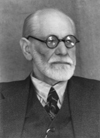

Sigmund Freud
(1856-1939)
Austrian neurologist, psychologist and physician. He founded the theory and treatment methods for neuroses called psychoanalysis which became one of the most influential doctrines of the XXth century. He introduced great contribution into the notion of nature of human psyche.
Sofya Vasilyevna Kovalevskaya
(1850-1891)
Russian mathematician and mechanical engineer, first woman professor in the world. In 1889 she was elected a corresponding member of the St. Petersburg Academy of Sciences: before that the special resolution about awarding women with academic titles had been passed.
Thomas Edison
(1847-1931)
World-famous American inventor. He received about one thousand patents in the USA and about three thousand patents in other countries. He improved telegraph, telephone, cinematographic equipment, created safe electric filament lamp, founded electronics, invented phonograph, cinetograph, stenciled printing and many other things. It was he who offered to use the word “hello” (transformed into “allo” in Russian) as a greeting when speaking over the phone.
Nicholai Nicholayevich Miklukho-Maklai
(1846-1888)
Russian ethnologist, anthropologist, biologist and traveler. He studied aboriginal population of South-East Asia, Australia and Oceania including the Papuans of North-East cost of New Guinea (in Russian literature this coast is called Miklukho-Maklai Coast). The explorer’s birthday, July 17, is the professional holiday of ethnologist.
Friedrich Engels
(1820-1895)
One of founders of Marxism, friend and collaborator of Karl Marx. The last volumes of Das Kapital were published by Engels after death of Karl Marx. In the last years of his life he developed the Marxist science, enriched the Marxist strategy and tactics with new theoretical conclusions, launched struggle against opportunism and left sectarianism, against dogmatism in socialist parties.
Karl Marx
(1818-1883)
Philosopher, economist, political journalist. In 1867 the first volume of the main political economic work of his life, Das Kapital, containing critical analysis of capitalism, was published. Publications of Karl Marx favored formation of the basics of communist and socialist movement, which were named Marxism.
Nikolai Ivanovich Pirogov
(1810-1881)
Russian surgeon and anatomist, naturalist and teacher, public figure. One of founders of surgery as scientific medical discipline, founder of battle-field surgery. He participated in the siege of Sevastopol (Crimean War) in 1854-1855. Corresponding member of the Russian Academy of Sciences (1847).
Vladimir Ivanovich Dal
(1801-1872)
Russian physician, well-known lexicographer, ethnologist, writer of collection Sayings of the Russian People, author of Explanatory Dictionary of the Live Great Russian Language. For the first issues of the Dictionary he was decorated with Konstantin medal (1861) by the Emperor Geographical Society and was elected a honorable member of the Emperor Academy of Sciences (1868), and when the whole dictionary was published he was awarded with the Lomonosov Prize.
Thomas Young
(1773-1829)
English physicist, physician, astronomer and orientalist, one of founders of the wave theory of light. At the age of 21 he became a member of the London Royal Society (1794), from 1802 to 1829 he was its secretary. His scientific interests were very diverse; the most important directions of work were optics, mechanics, physiology of eyesight, philology. Aside from science he was well known as a good musician and painting expert as well. He also dealt with decryption of hieroglyphs.
Ivan Petrovich Kulibin
(1735-1818)
Outstanding inventor, Russian self-educated mechanical engineer; his name became the synonym of creative endowments of mind. From 1769 and for 30 years he headed the mechanical workshop of the St. Petersburg Academy of Sciences, directed production of instruments, astronomical, physical and navigation tools and instruments. Overwhelming number of his inventions, possibility of implementation of which is confirmed nowadays, were not implemented in that time.
Mikhail Vasilyevich Lomonosov
(1711-1765)
First Russian scientist-naturalist, poet laying foundation for the modern Russian language, artist, historian, advocate of development of home education, science and economy, founder of molecular and kinetic theory. He developed the design of the Moscow University which was later named after him. He made a number of discoveries in many sciences. Heritage of Mikhail Vasilyevich Lomonosov has the world meaning.
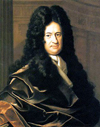

Gottfried Wilhelm von Leibniz
(1646-1716)
German (Saxon) philosopher, mathematician, inventor. One of the most important representatives of new European metaphysics. At the same time with Isaac Newton he created mathematical analysis – differential and integral calculus. He created combinatorial analysis as science. Founder of the Berlin Academy of Sciences and its first President. He was a foreign member of the Paris Academy of Sciences.
Isaac Newton
(1643-1727)
Great English physicist, mathematician and astronomer. Author of fundamental work Philosophiæ Naturalis Principia Mathematica describing the law of gravitation and the so called Newton laws, forming the basis for classical mechanics. He developed differential and integral calculus, chromaticity theory and many other mathematical and physical theories.
Calligraphy is the art of both ideal writing and an ideal soul.
